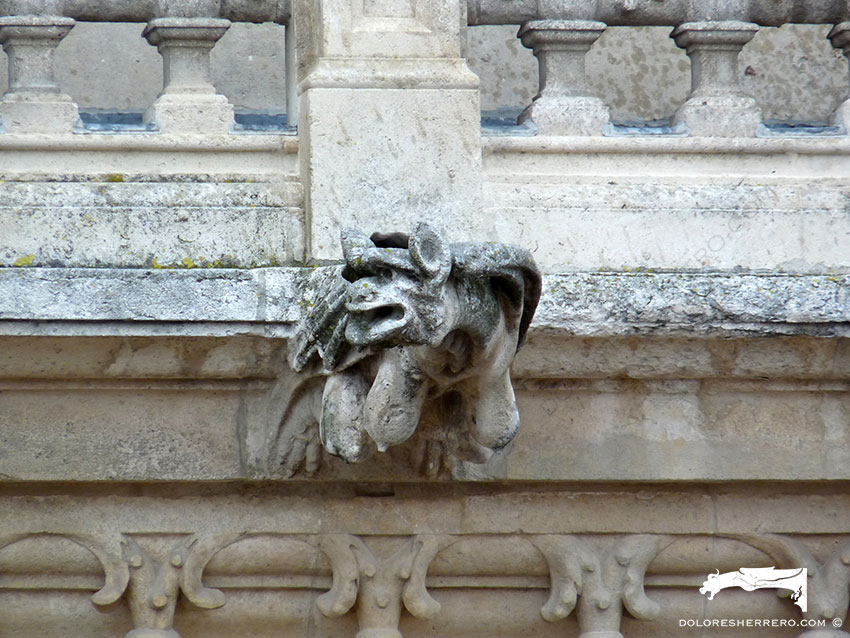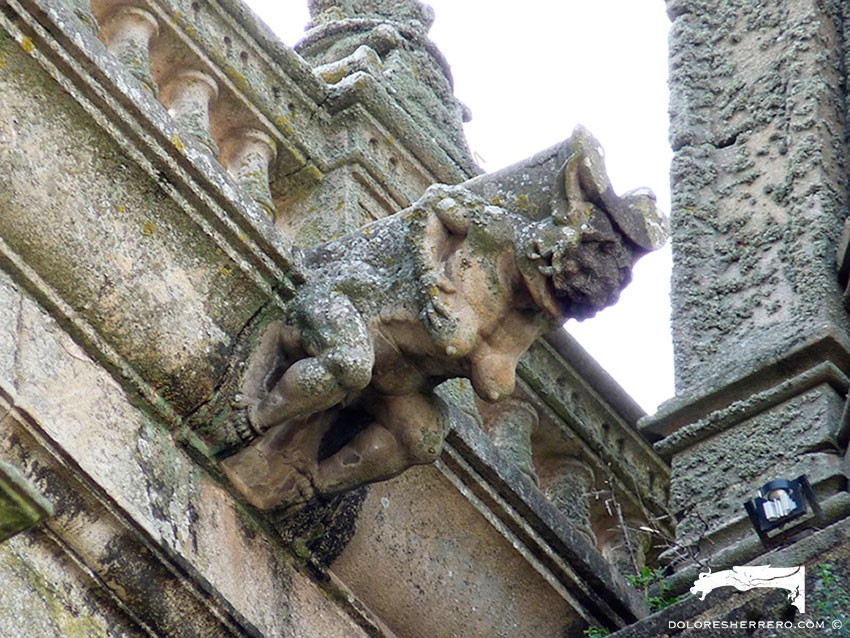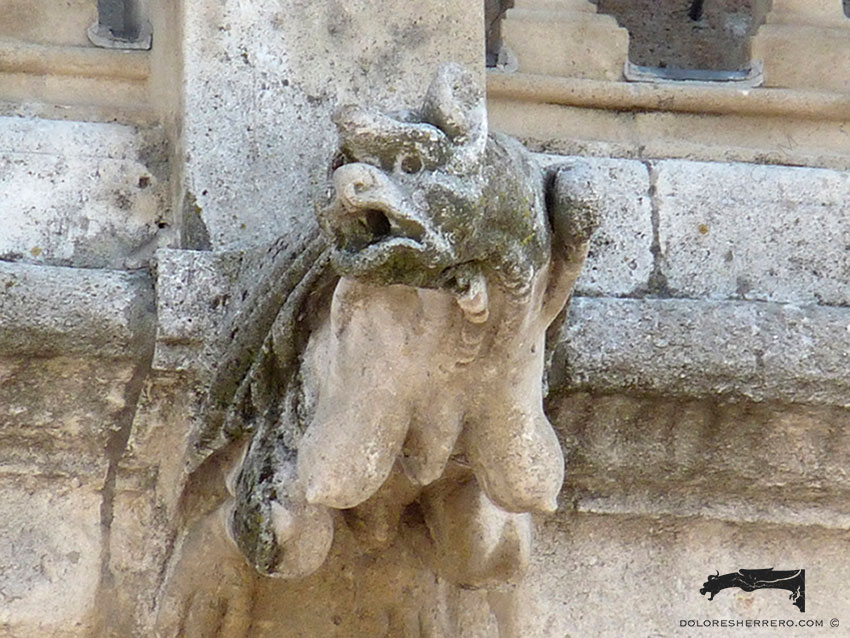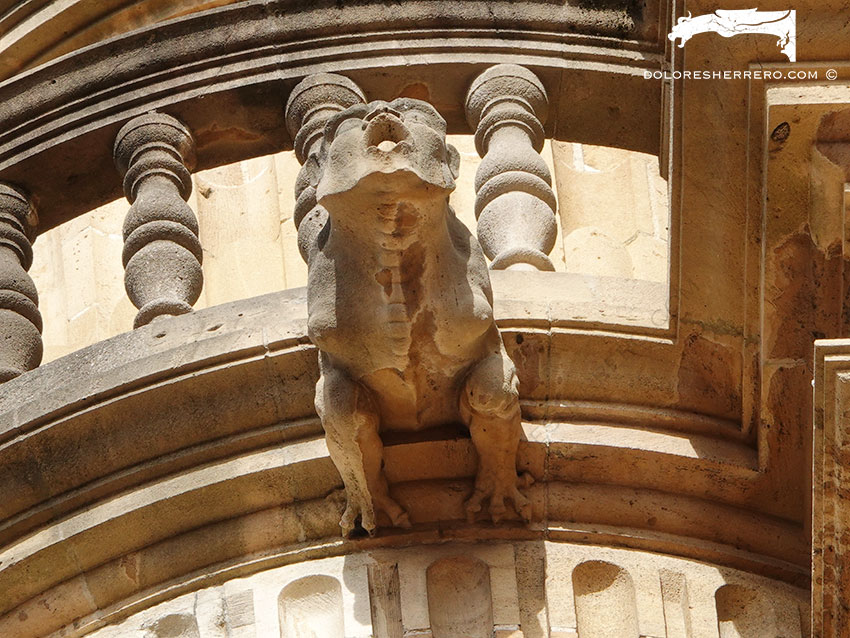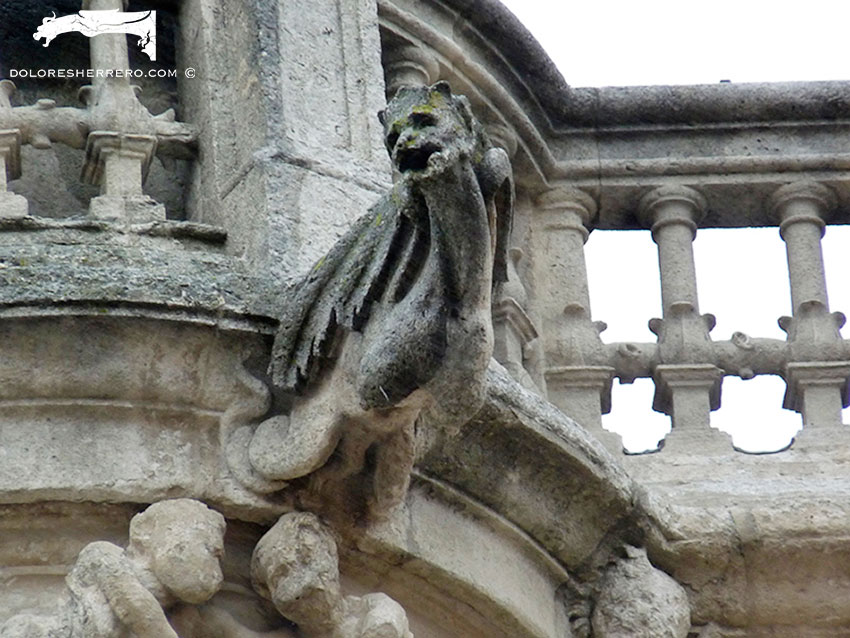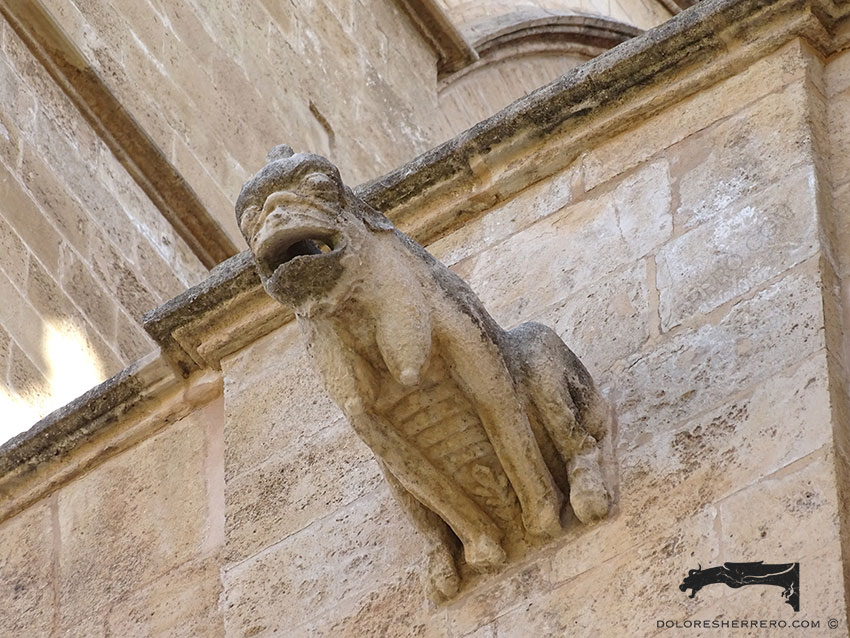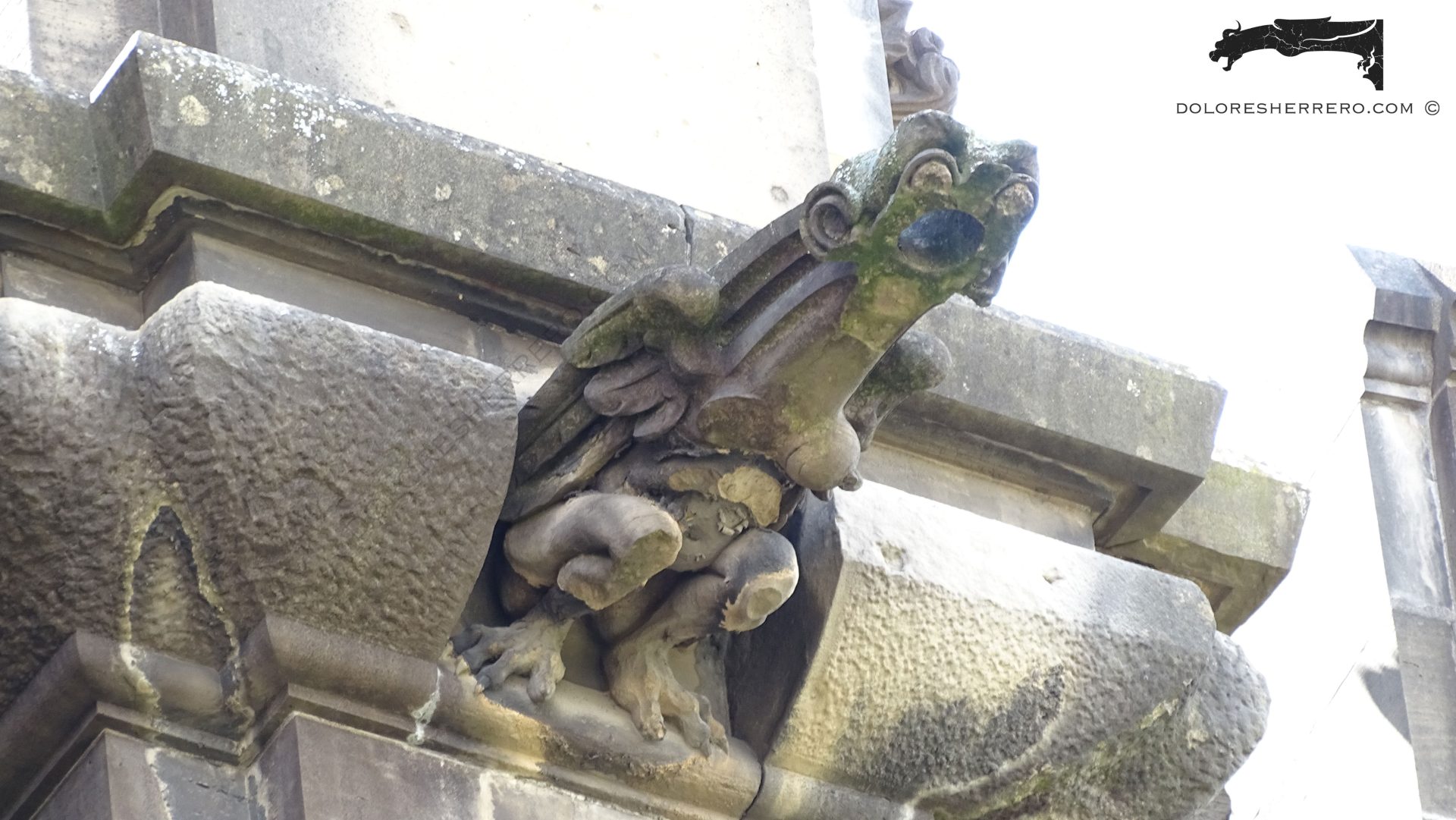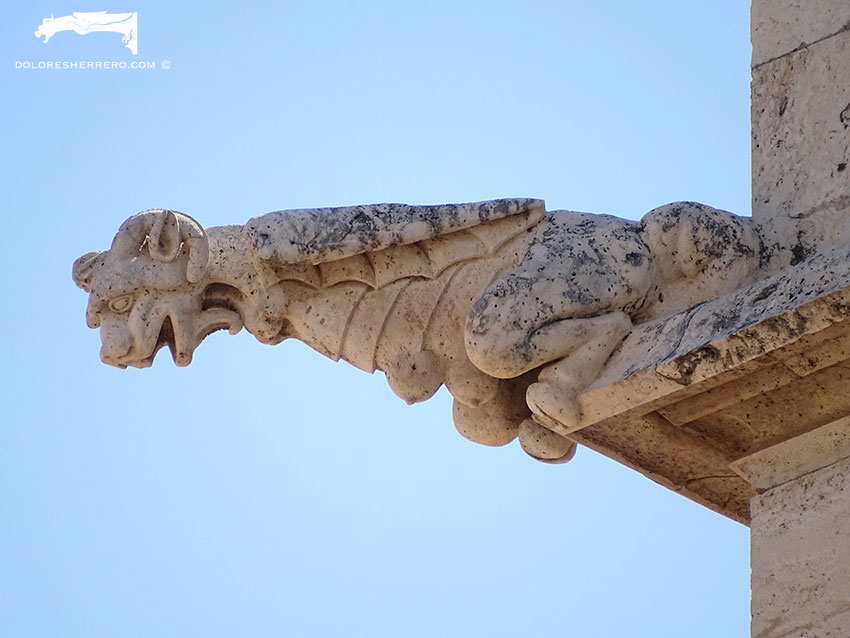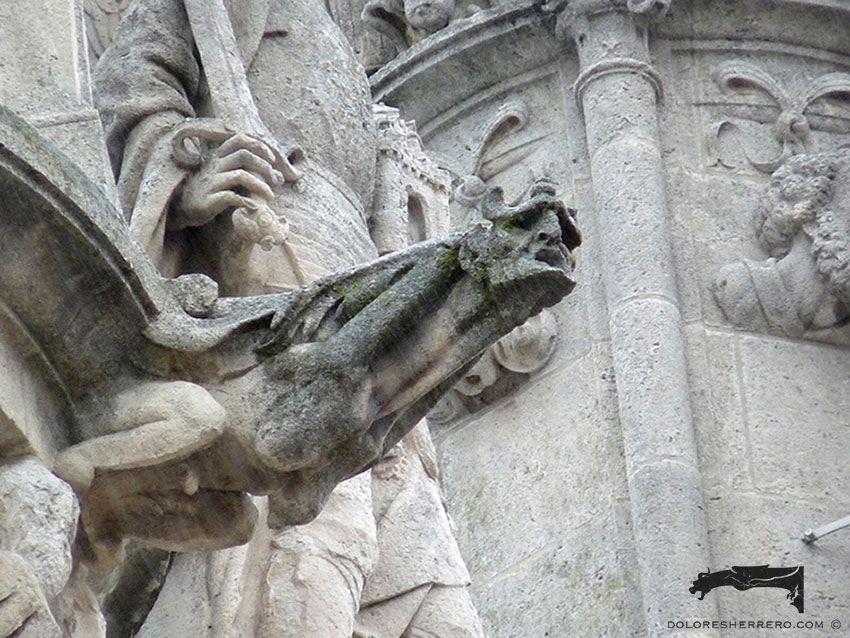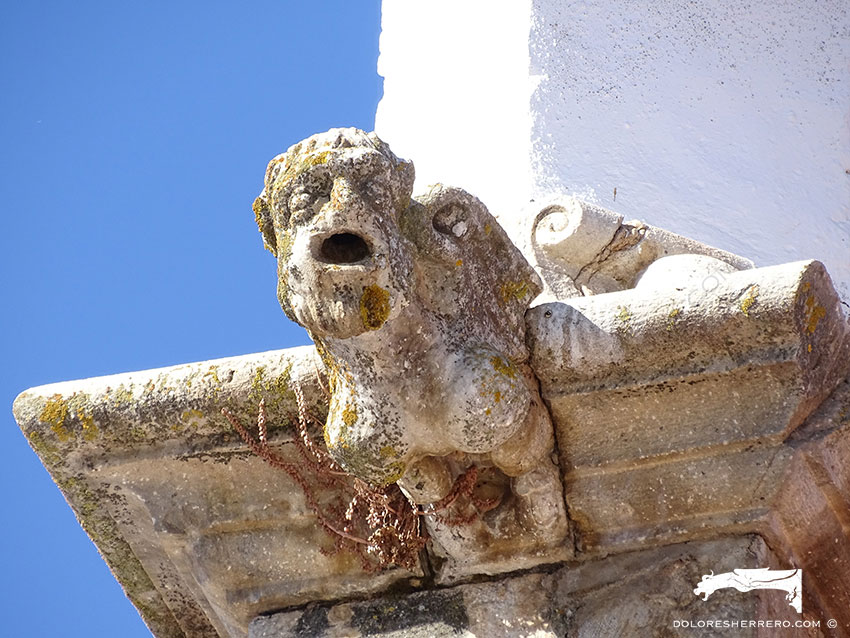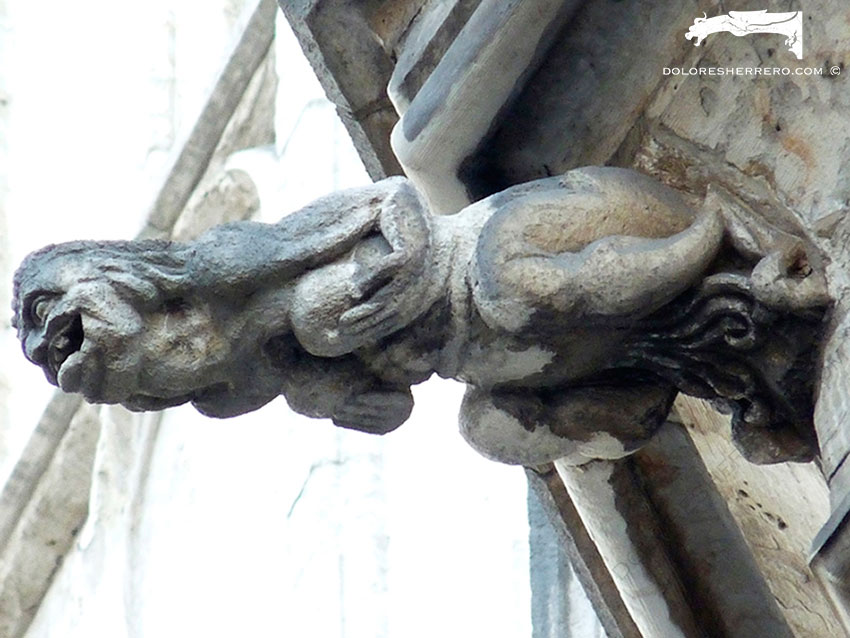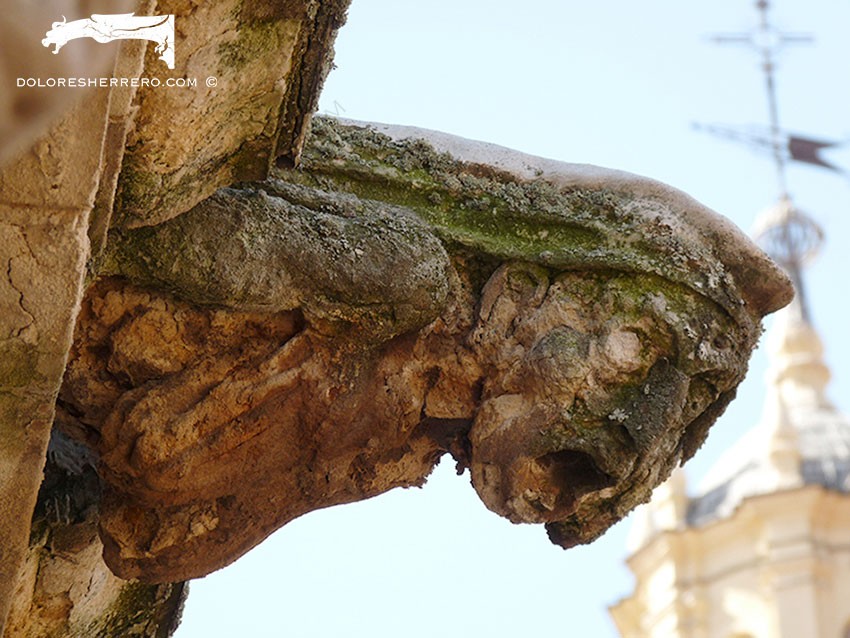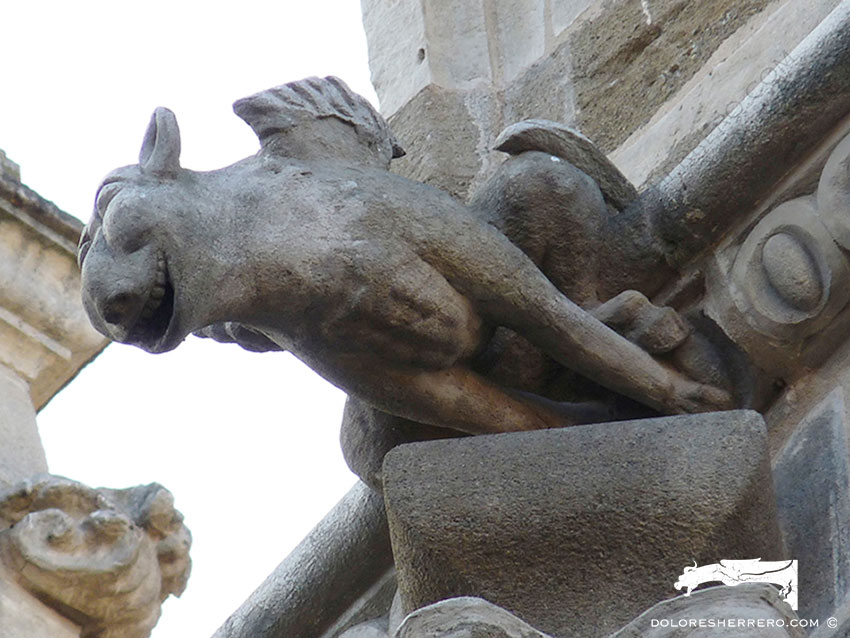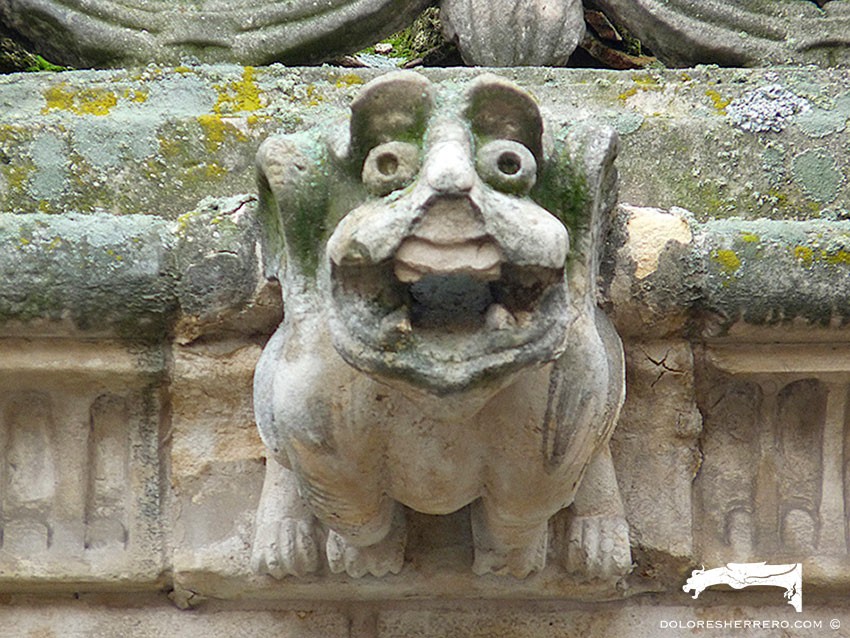Following on from the last post about gastrocephalic devils and the snake as an animal linked to the idea of good and evil, this post begins by talking about images of the devil in woman’s form.
In gargoyles it’s common to find demonic figures with drooping breasts. Devils with women’s breasts appear in the late Middle Ages, at a time when women symbolised damnation and guilt.
- Burgos Cathedral (Spain)
- Plasencia Cathedral (Spain)
- Burgos Cathedral (Spain)
- Oviedo Cathedral (Spain)
- Burgos Cathedral (Spain)
- Cathedral of María Inmaculada in Vitoria (Spain)
- Lonja in Valencia (Spain)
- Burgos Cathedral (Spain)
- Church of Santa María Magdalena in Olivenza (Badajoz, Spain)

Burgos Cathedral (Spain)
However, these images can also have other meanings. Kenaan-Kedar states that women monsters with animal heads and bodies and women’s breasts depicted women’s devouring nature. Both they and old women make up a combination of figures described in the Witches’ Sabbath. Depictions of old women in Marginal Romanesque and Gothic sculpture are connected with the idea of causing harm in others and not simply with the grotesqueness of old age.
- Brussels City Hall (Belgium)
- Brussels City Hall (Belgium)

Church of Nossa Senhora do Pópulo, Coto e São Gregório in Caldas da Rainha (Portugal)
There are also gargoyles with figures of witches, women at the service of evil. The Malleus Maleficarum (1487), an inquisitorial treatise written during the terrible witch hunts of the Inquisition, shows the significance of witches and what they stood for back then.
- Provincial Museum of Salamanca (Spain)
- Palace of Monterrey in Salamanca (Spain)
Gargoyles of grotesque demons
The portrayal of the devil has evolved over time. In the early Gothic period, the figures were more symbolic than grotesque. However, by the late Gothic the devil was starting to appear more frequently and would become more of a comic rather than a terrifying image. According to Rebold Benton, this was the result of the loss of some of its religious connotations in sculpture of the end of the Gothic period, which played down its maleficent nature. Plus, the comic and the unpleasant often became mixed up, so the devil gradually turned into more of a theatrical character, even a kind of buffoon.
It’s worth noting that in all periods and places, people have used the grotesque – both horrific and benevolent – to symbolise their wish to avoid the powers of evil and channel the forces of good.
- Astorga Cathedral (Spain)
- House of Shells in Salamanca (Spain)
Bibliography consulted
BURBANK BRIDAHAM, L., The Gargoyle Book. 572 examples from Gothic Architecture, New York, Dover Publications, Inc., 2006.
GÓMEZ GÓMEZ, A., El Protagonismo de los otros. La imagen de los marginados en el Arte Románico, Bilbao, C. E. H. A. M./E. A. H. I., 1997.
GRIVOT, D., Le diable dans la cathedrale, Paris, Editions Morel, 1960.
KAPPLER, C., Monstruos, demonios y maravillas a fines de la Edad Media, Madrid, Ediciones Akal, S. A., 1986.
KENAAN-KEDAR, N., Marginal Sculpture in Medieval France. Towards the deciphering of an enigmatic pictorial language, Hants (England) and Vermont (USA), Scolar Press and Ashgate Publishing Company, 1995.
KRAMER, H. y SPRENGER, J., Malleus Maleficarum. El martillo de los brujos, Barcelona, Reditar Libros, S. L., 2006.
REBOLD BENTON, J., Holy Terrors. Gargoyles on medieval buildings, New York, Abbeville Press, 1997.
SHERIDAN, R. y ROSS, A., Grotesques and Gargoyles. Paganism in the Medieval Church, London, David & Charles: Newton Abbot, 1975.
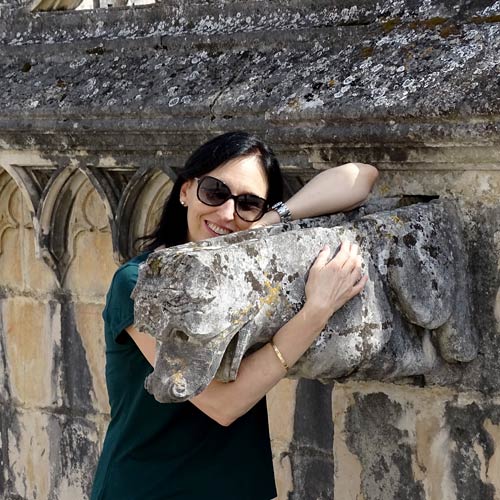
Doctor of Art History and researcher specializing in the study of gargoyles.
I am Dolores Herrero Ferrio, and my thesis, “An Approach to the Study of Gargoyles of Gothic Cathedrals in Castilla and León”, is dedicated to the study of these fascinating figures.
If you like gargoyles and art history, you will also enjoy my book, “The Gargoyle and Its Iconography,” a book I have written with great care for those interested in the world of gargoyles.
I have created my own Encyclopedia of Gargoyles, a Gargopedia to share with you, where you will discover all the secrets and wonders of these enigmatic sculptures.
I hope you enjoy this Gargopedia as much as I have enjoyed creating it, and remember that each gargoyle has a story to tell, and here you will discover them all.
